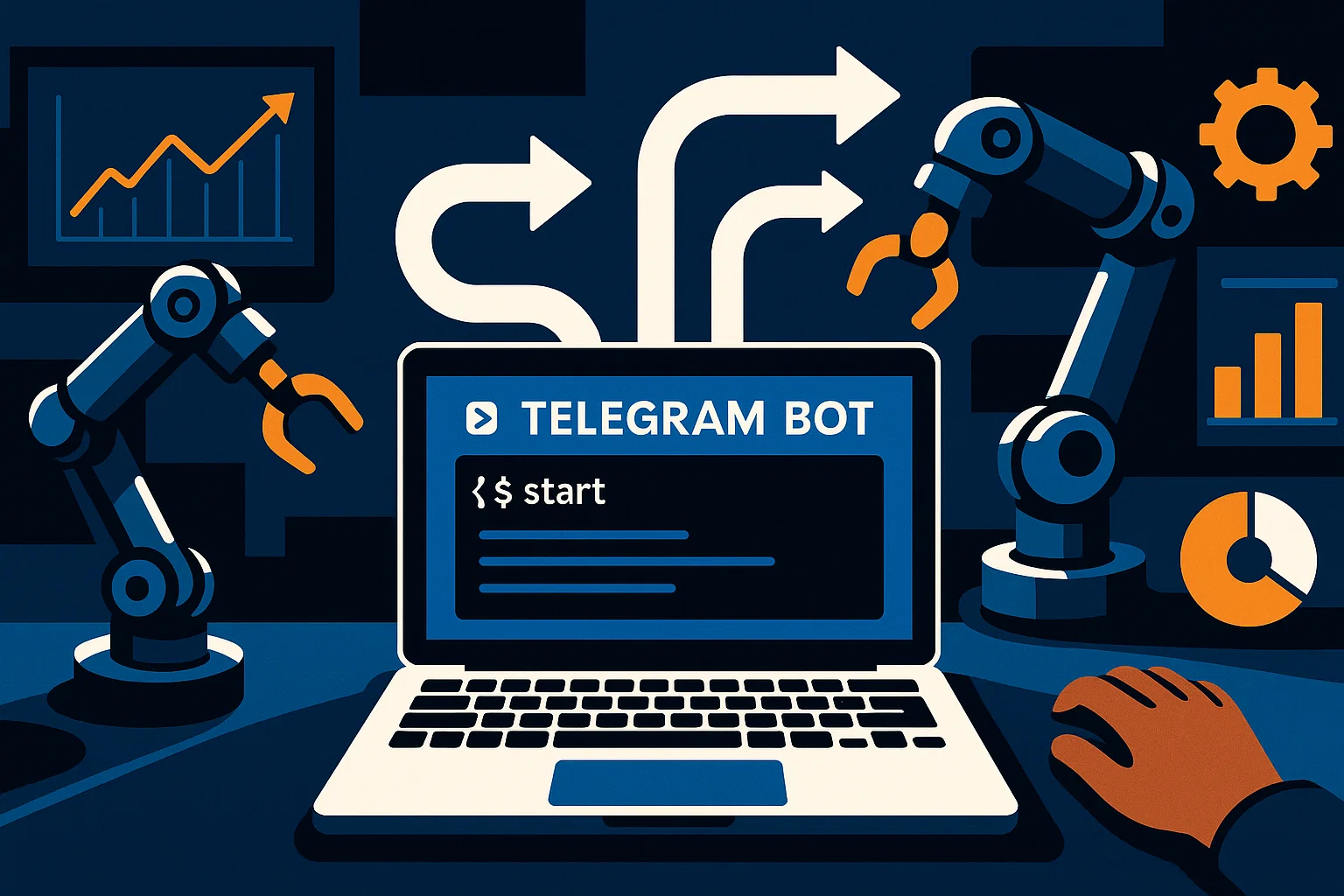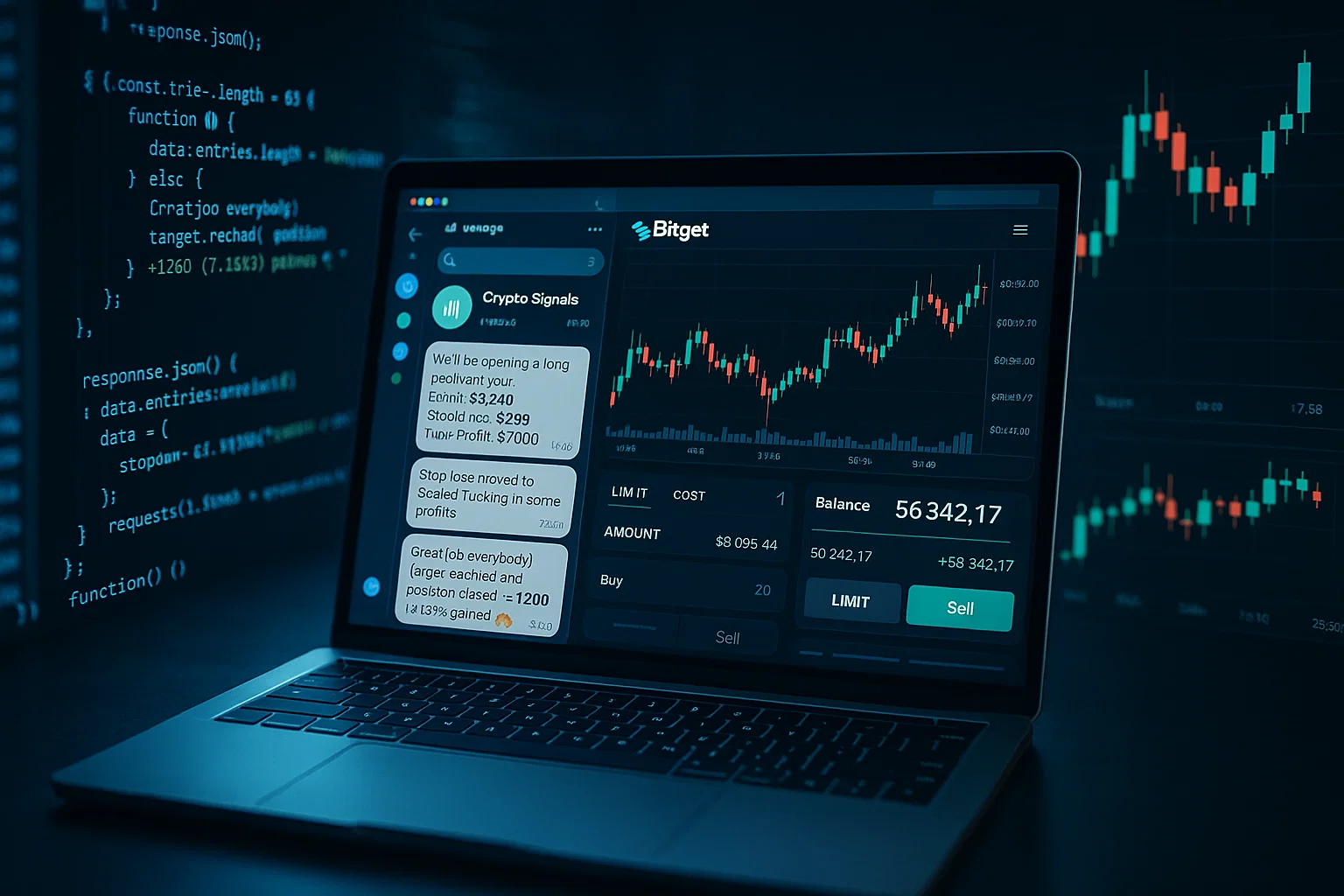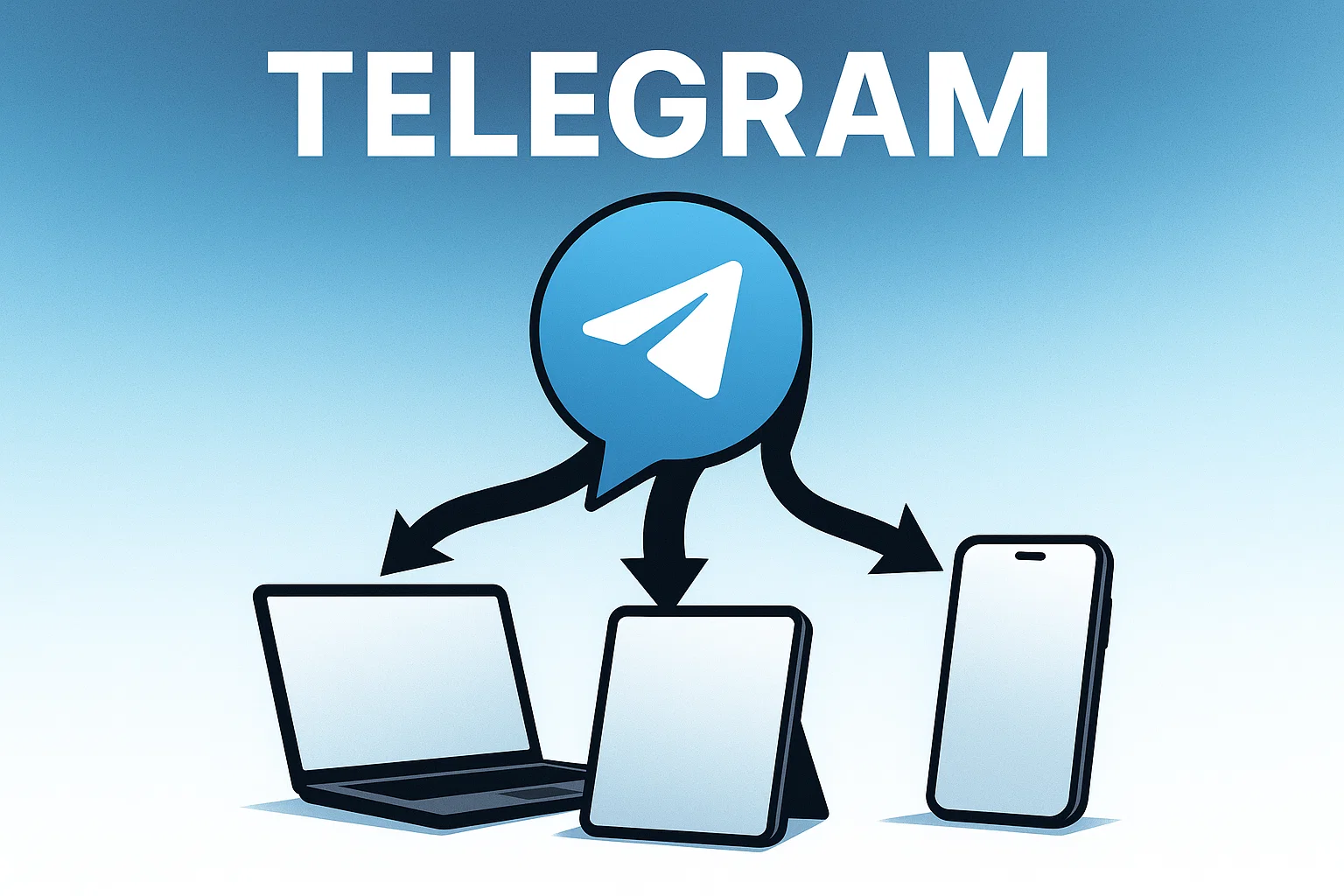Tech essentials for Telegram bot development: learn which tech stacks, RPA tools, and data analytics methods to use, follow step-by-step automation code, and download the checklist to launch faster.
Introduction
Tech is the backbone of modern bots, and this guide is informational: I’ll show you how to pick stacks, automate workflows, and add data science to scale Telegram bots and similar chat automation. In my experience, starting with simpler tech choices reduces time to launch and avoids costly rewrites later. You’ll get practical examples, a short data analytics case study, and a ready code snippet for RPA. Related entities include RPA platforms and data analytics tools so you can integrate automation, monitoring, and user testing quickly.
Why this matters: bots must be reliable, maintainable, and measurable. I’ll walk you from concept to a production-ready checklist.
Overview of Bot Development Tech
What do we mean by tech for bots? At its core, the tech stack includes the messaging API, hosting, automation tools, data pipelines, and testing frameworks. Tech choices affect reliability, costs, and speed to market.
Core components
- Messaging layer: Telegram Bot API or Discord API.
- Runtime: Node.js or Python for webhook handlers and scheduled jobs.
- Automation: RPA or serverless functions for repetitive tasks.
- Data & analytics: databases, ETL, and dashboards to measure usage.
Background and why it matters
Telegram bots can handle large volumes of messages. Picking the right tech keeps costs down and improves uptime. For example, using a lightweight Python webhook on a small VPS can be cheaper than a heavy containerized deployment.
Design patterns
- Event-driven design: process updates asynchronously.
- Command pattern: keep command handlers isolated.
Security basics
- Validate incoming webhook signatures, limit rate, and store secrets in a secure vault.
Automation & RPA Essentials: a practical how-to
Here’s a step-by-step approach to automating common bot tasks using RPA-style automation and serverless functions.
- Identify repeatable tasks
- List tasks like welcome messages, invoice generation, or data entry into third-party apps.
- Choose a tool
- Pick lightweight RPA or scriptable automation: Python with requests/Selenium for web flows, or Node.js with Puppeteer for web scraping and automation.
- Build a simple RPA worker
- Below is a Python example that logs into a web dashboard and extracts a few fields. Use this to automate nightly reports.
# python
# Simple RPA worker: logs in and fetches a report
import requests
from bs4 import BeautifulSoup
LOGIN_URL = "https://example-dashboard/login"
REPORT_URL = "https://example-dashboard/report"
SESSION = requests.Session()
def fetch_report(username, password):
# minimal login handling
r = SESSION.get(LOGIN_URL)
# pretend we parse form token
token = "fixed-token"
payload = {"user": username, "pass": password, "token": token}
res = SESSION.post(LOGIN_URL, data=payload, timeout=10)
if res.status_code != 200:
raise Exception("Login failed")
r2 = SESSION.get(REPORT_URL, timeout=10)
soup = BeautifulSoup(r2.text, "html.parser")
# extract a simple metric
metric = soup.select_one(".metric").text.strip()
return metric
if __name__ == "__main__":
print(fetch_report("botuser", "botpass"))
Explanation: This script uses requests and BeautifulSoup to automate a simple login and scrape a metric. Replace selectors and add robust error handling for production.
Integrate with your Telegram bot
- Create a scheduled job (cron or serverless trigger).
- Run the RPA worker, store results in a DB.
- Have the bot read DB and send summarized messages to users or admin channels.
Data analytics case study (short)
A small service tracked bot commands, response times, and conversion events. Using a simple ETL (CSV dumps to a Postgres table) and a dashboard, the team found a command that timed out and increased its timeout. After optimizing the handler, average response time dropped by 35 percent and user retention improved. Lesson: combine small data pipelines with monitoring early.
Data Science Integration: analytics & ML for bots
Why add data science? Data lets your bot personalize responses, predict churn, and surface insights.
Practical steps
- Collect minimal telemetry: commands, user id (hashed), timestamps, outcomes.
- Use lightweight ML: logistic regression or a decision tree to predict churn.
- Build a feedback loop: log predictions vs outcomes to improve models.
Tools and libraries
- Python: pandas, scikit-learn, SQLAlchemy.
- Node: node-postgres, TensorFlow.js for lightweight in-app models.
How to implement
- Start simple: move from descriptive analytics (what happened) to predictive analytics (what will happen).
- Keep pipelines reproducible and versioned.
- Serve models as small services that your bot calls for recommendations.
Best practices, recommended tools, pros and cons
Tool recommendations
- Node.js + Telegraf
- Pros: fast, large ecosystem, great middleware.
- Cons: callback hell if unstructured.
- Start tip: run
npm initthennpm i telegraf.
- Python + python-telegram-bot
- Pros: readable, strong data libraries.
- Cons: slower concurrency by default.
- Start tip:
pip install python-telegram-bot.
- RPA: Puppeteer or Selenium
- Pros: automate any web UI, mature.
- Cons: brittle with UI changes.
- Start tip:
npx puppeteerfor a quick script.
Pros and cons summary
- Use Node for high-concurrency message handling.
- Use Python for analytics and heavy data operations.
- Use RPA for integration when an API is missing.
User Testing Strategies
Testing early prevents regressions and UX problems.
Test types
- Unit tests for command handlers.
- Integration tests for APIs and webhooks.
- Load tests to simulate bursts.
User testing tips
- Run A/B tests for message wording.
- Capture session replays or logs for failed flows.
Accessibility and UX
Make responses concise, add keyboard options, and support screen readers.
Monitoring, scaling, and observability
Set up basic observability: request traces, error rates, and uptime checks. Use simple dashboards to watch latency and queue sizes. Observability tech like Prometheus and Grafana can be added after your first stable release.
Example Node.js webhook handler (minimal)
// javascript
// Simple Node.js webhook using express and telegraf for Telegram
const express = require('express');
const { Telegraf } = require('telegraf');
const app = express();
const bot = new Telegraf(process.env.BOT_TOKEN);
bot.start((ctx) => ctx.reply('Welcome!'));
bot.command('status', async (ctx) => {
try {
// reply with a simple status, include tech metrics
await ctx.reply('Bot is online, processing updates');
} catch (err) {
console.error('Reply failed', err);
}
});
app.use(bot.webhookCallback('/bot'));
app.listen(process.env.PORT || 3000, () => {
console.log('Server listening');
});
Scaling tips
- Queue heavy work to background workers and use a message queue.
- Cache frequently used data to avoid API rate limits.
- Use health checks and restart policies.
Challenges, legal and ethical considerations, troubleshooting
Common challenges
- Rate limits and anti-bot protections.
- State synchronization between servers.
- Handling abusive users.
Legal & ethical checklist
- Respect user privacy and minimize collected personal data.
- Comply with platform ToS and privacy laws.
- Offer opt-out and deletion workflows.
Compliance checklist
- Store only hashed user identifiers when possible.
- Publish a privacy policy and Terms of Service.
- Implement data retention rules and secure backups.
Troubleshooting tips
- Use structured logs and a correlation id for each update.
- Reproduce the issue locally with recorded updates.
Bots should validate inputs and follow platform best practices to avoid suspension. (Telegram docs)
Structured testing and monitoring reduce failure rates and improve reliability. (Google research on reliability)
Choose lightweight tech first and iterate.
Key takeaways
- Pick the right tech for scale and cost.
- Automate repeatable tasks early, but prefer APIs over RPA where possible.
- Instrument your bot with analytics and monitoring from day one.
Conclusion and CTA
You now have a practical map of the tech you need to build, automate, and scale Telegram bots. Key takeaways: pick a stack that fits your scale, automate repeatable tasks, and add analytics early. Welcome to Alamcer, a tech-focused platform that offers free bot templates, guides, and optional custom development. Download the free Bot Dev Checklist and get lifetime hosting from Alamcer.com. If you want help implementing any part of this stack, Alamcer offers custom development and hosting to get you live faster.
Compliance/disclaimer
This guide is for informational purposes and not legal advice. Consult a professional for compliance questions about privacy, GDPR, or CCPA.
External resources
- Google guidelines on quality and search best practices (Google guidelines)
- Best practices for keywords and content optimization (Moz)
- Content audit and optimization techniques (SEMrush)
- Telegram Bot API documentation (official docs)
FAQs
What is tech?
Tech refers to the tools, languages, libraries, and systems used to build and run bots, including messaging APIs, runtimes, automation tools, hosting, and analytics services.
How do I start building a Telegram bot?
Register your bot via BotFather, pick a runtime (Node.js or Python), set up a webhook or long-polling handler, and deploy to a small server or serverless platform. Start simple, add monitoring, and iterate.
Do I need RPA to automate bots?
Not always. Use APIs when available. RPA helps when there is no API and you need to automate a web UI or legacy interface.
Can I use machine learning in a bot?
Yes, start with small models for personalization or churn prediction. Collect labeled events, train offline, and serve predictions from a lightweight service.
What hosting options work best?
For predictable loads, use VPS or containers. For bursty traffic, consider serverless or managed platforms. Match cost to traffic and processing needs.
How do I test bot commands?
Write unit and integration tests, record webhook payloads for replay, and run load tests to simulate peak traffic.
Is storing user data safe?
Yes if you follow best practices: minimize collected data, hash identifiers, encrypt sensitive fields, and provide deletion and export options.
Which languages are best for bots?
Node.js and Python are the most common due to ecosystem support. Node.js excels at concurrency, Python at data processing.
How much does it cost to run a bot?
Costs vary: a basic bot can run on an inexpensive VPS. Costs increase with heavy data processing, third-party APIs, or high traffic volume.
Where can I get bot templates?
Alamcer provides templates, guides, and hosting to help you start and scale quickly.



